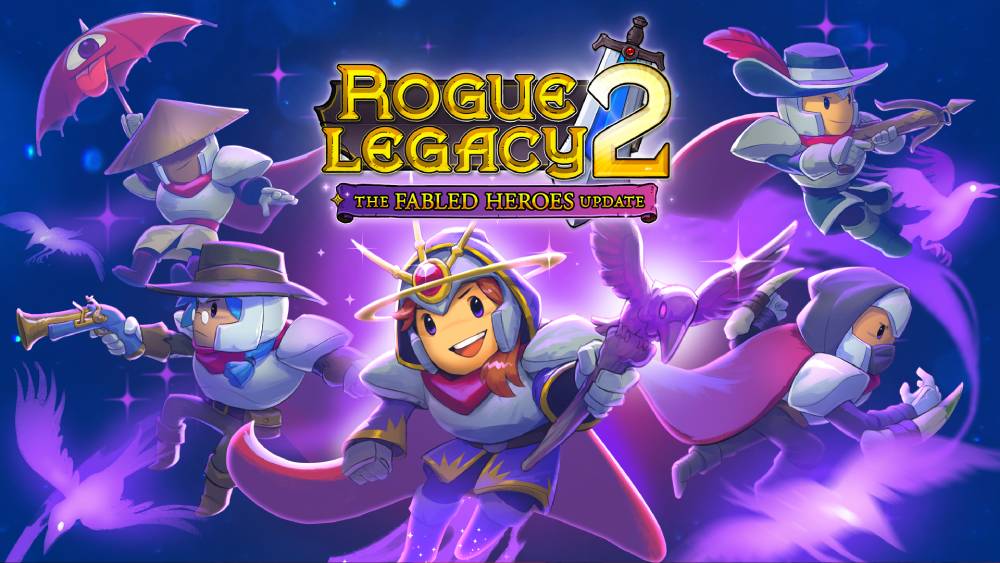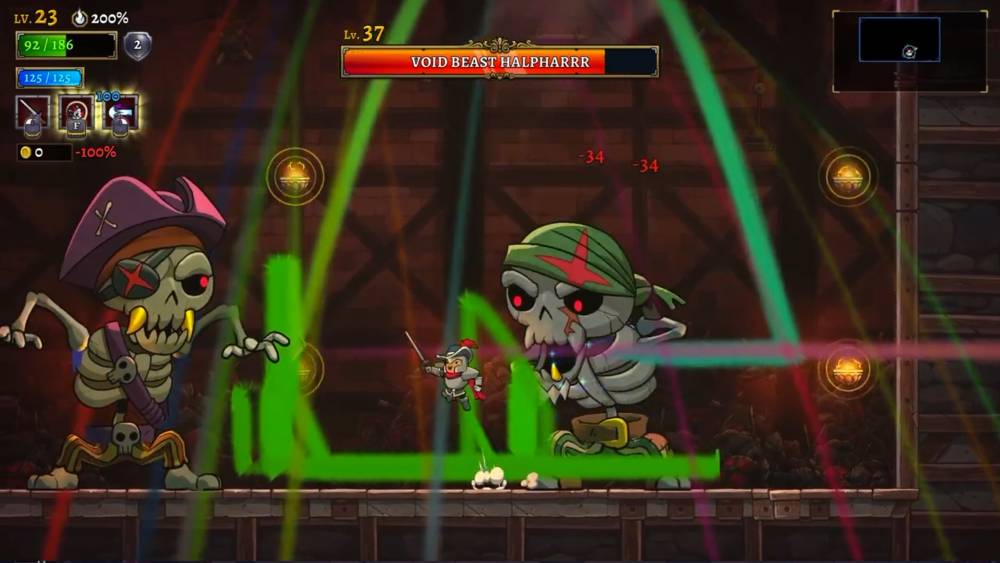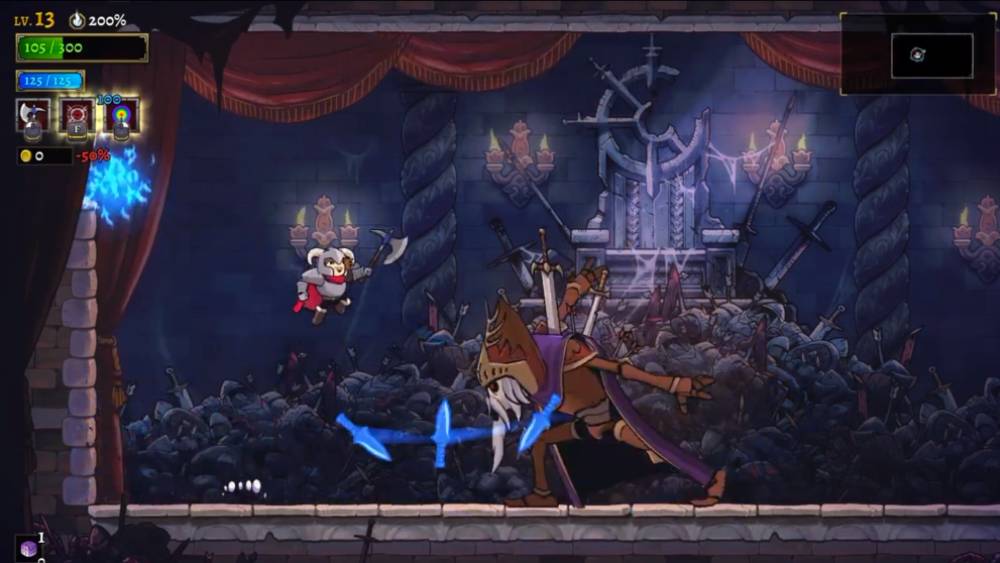Physical Address
304 North Cardinal St.
Dorchester Center, MA 02124
Physical Address
304 North Cardinal St.
Dorchester Center, MA 02124

In the expansive realm of roguelikes, few games have managed to meld challenge, charm, and character progression as seamlessly as “Rogue Legacy”. With the release of “Rogue Legacy 2”, Cellar Door Games dives back into this treacherous territory, offering a rich sequel that not only pays homage to its forebear but also stands tall with innovations of its own. A game where every death is not the end but a stepping stone to future glory, “Rogue Legacy 2” immerses players in a relentless, randomized dungeon, where both legacy and strategy define your journey’s success. This review delves deep into this dungeon crawler to discern if it truly holds the torch high for the roguelike hall of fame or if it’s merely riding on the coattails of its predecessor’s success.

The story of “Rogue Legacy 2” begins with its developer, Cellar Door Games. Known for their innovation and unique twists on genres, Cellar Door Games had previously set a benchmark with the original “Rogue Legacy”. This title helped pave the way for the roguelike genre, a subgenre that mixes the punishing difficulty of roguelikes with progression elements that outlive character deaths.
“Rogue Legacy” burst onto the scene almost a decade prior, bringing with it a fresh perspective on roguelike gameplay. Its standout feature was the inheritance system, where players would control a new descendant of their hero after each death, each with their own strengths, weaknesses, and quirks. The game garnered a dedicated fanbase, eager for more dungeon-crawling, and left a lasting impression on the gaming landscape.
In the years that followed the release of the original “Rogue Legacy”, the roguelike genre witnessed an influx of titles drawing inspiration from it. Games began incorporating mechanics where failure was no longer a full reset but instead a chance for growth and progress. This shift in dynamics made roguelikes more approachable while still retaining the challenge, further propelling the genre into the spotlight.
The announcement of “Rogue Legacy 2” was met with palpable excitement, but also lofty expectations. Given the impact and success of its predecessor, the sequel had big shoes to fill. Gamers wondered if it would retain the charm and innovative mechanics of the first while introducing fresh ideas to stand out in a now-crowded rogue-like market.

The heart of “Rogue Legacy 2” beats within its procedurally generated castle, ensuring that no two runs feel identical. Each venture into this challenging maze offers new rooms, enemies, and treasures. This randomization is a double-edged sword – granting freshness and unpredictability but also demanding adaptability from the players.
Upon the inevitable death of a hero, players are introduced to their successors, each equipped with distinct abilities, strengths, and quirks. The game boasts a myriad of classes, from returning favorites like the stalwart Knight and formidable Barbarian to novel additions such as the fiery Gunslinger and strategic Valkyrie. These classes are more than mere labels; they define playstyle, strategy, and combat approach. Not to mention, the introduction of the Chef class showcases the game’s whimsical side, blending combat and cooking in a delightful medley.
One of the game’s standout features remains its character trait system. These traits, ranging from humorously cosmetic to drastically game-altering, shape the player’s experience in unexpected ways. Whether it’s turning the entire game world upside down with vertigo or playing as a pacifist unable to harm enemies, these quirks ensure that each run is memorable.
The foes that inhabit the castle are as diverse as the heroes challenging them. From screen-filling monstrosities hurling deadly projectiles to swift melee attackers, each enemy type demands a unique approach. This, combined with intricate platforming challenges, hazardous traps, and innovative threats like the orb-wielding Nightmare, ensures that players must be both strategic and reflexive to advance.
Death in “Rogue Legacy 2” is not a pitfall but a stepping stone. The gold amassed during each run contributes to an intricate upgrade system. This progression is not limited to mere statistical boosts but expands to unlocking new character classes, merchants, and game-modifying utilities like the Architect. The tantalizing prospect of these upgrades often turns the sting of defeat into anticipation for the next run.

“Rogue Legacy 2” marks a significant departure from its predecessor in terms of visual style. While the original game was celebrated for its pixelated charm, this sequel embraces a more refined, hand-drawn aesthetic. This choice not only modernizes the look but also adds depth and detail to the game’s whimsical inhabitants and intricate environments.
Each level in the game boasts its own distinctive visual style. From the classic castle settings to enchanting studies filled with magical platforms, players traverse diverse landscapes. Later stages, like the mesmerizing snow-covered environments, are a testament to the game’s artistic prowess. These vivid backdrops, teeming with details, play a significant role in immersing players in the world of “Rogue Legacy 2”.
The various classes and heirs in the game are depicted with care and personality. Each class, from the stalwart Knight to the quirky Chef, is designed with unique animations and characteristics. This level of detail, paired with fluid animations, brings each character to life, making every playthrough feel distinct and personal.
The auditory experience in “Rogue Legacy 2” complements its visual counterpart splendidly. The soundtrack, a mix of epic melodies and haunting tunes, sets the mood for the adventures within the procedurally generated castle. Sound effects, whether it’s the clash of swords or the sound of gold coins, are crisp and add depth to the gameplay. The audio design is meticulously crafted, ensuring that players are always engrossed in their perilous journey.
At first glance, both “Rogue Legacy 2” and “Hollow Knight” might appear to inhabit similar terrains, nestled within the expansive Metroidvania landscape. However, their unique nuances set them apart in captivating ways. “Rogue Legacy 2”, with its roguelike DNA, emphasizes the unpredictability of its procedurally generated world and the iterative experience of growth through successive generations of heroes. Death here isn’t the end; it’s a new beginning with evolved capabilities. On the other hand, “Hollow Knight” thrives on its meticulously hand-crafted world, steeped in lore and mystery. Its challenges are more static, allowing players to gradually master its world through exploration and repeated attempts. Narratively, “Hollow Knight” offers a deeper, more interconnected story, while “Rogue Legacy 2” leans into the playful unpredictability of its characters and the inherent humor in their quirks. Both games, while sharing a genre, offer distinct experiences, with “Rogue Legacy 2” prioritizing adaptive gameplay and “Hollow Knight” immersing players in a richly detailed world.
“Rogue Legacy 2” and “Salt & Sanctuary” might both be shelved under the broad category of Metroidvania-inspired games, but they cater to different appetites within that genre. “Rogue Legacy 2” thrives on the roguelike element, bringing forth an experience where death is not only inevitable but is also a mechanism of progression. Every new life introduces a different hero with their own quirks, each contributing to an evolving gameplay experience. This cyclical journey is more about adaptation and growth through generations rather than mastery of a fixed world. Contrastingly, “Salt & Sanctuary” pays a visceral homage to the “Souls-like” style of gaming, where the brutal challenge and the somber, moody atmosphere take center stage. The world is grim, hand-drawn, and interconnected, demanding players to learn, adapt, and master its intricacies. The RPG elements in “Salt & Sanctuary” are deeper, allowing for more customization and strategy. While “Rogue Legacy 2” leans into dynamism and unpredictability, “Salt & Sanctuary” offers a more consistent, yet hauntingly challenging world to conquer.

“Rogue Legacy 2” carves out its niche in the vast landscape of roguelikes and Metroidvania games with aplomb. Its dynamic character generation system, coupled with the ever-evolving architecture of its world, makes for an experience that feels fresh with every playthrough. The game’s striking visual overhaul, expansion on its predecessor’s gameplay elements, and the infusion of new challenges make it a must-play for both fans of the original and newcomers alike. Its juxtaposition against other heavyweights in the genre highlights its unique approach and the sheer creativity of Cellar Door Games. In a world brimming with dungeon crawlers and roguelike titles, “Rogue Legacy 2” stands tall as a testament to innovation within familiar confines.